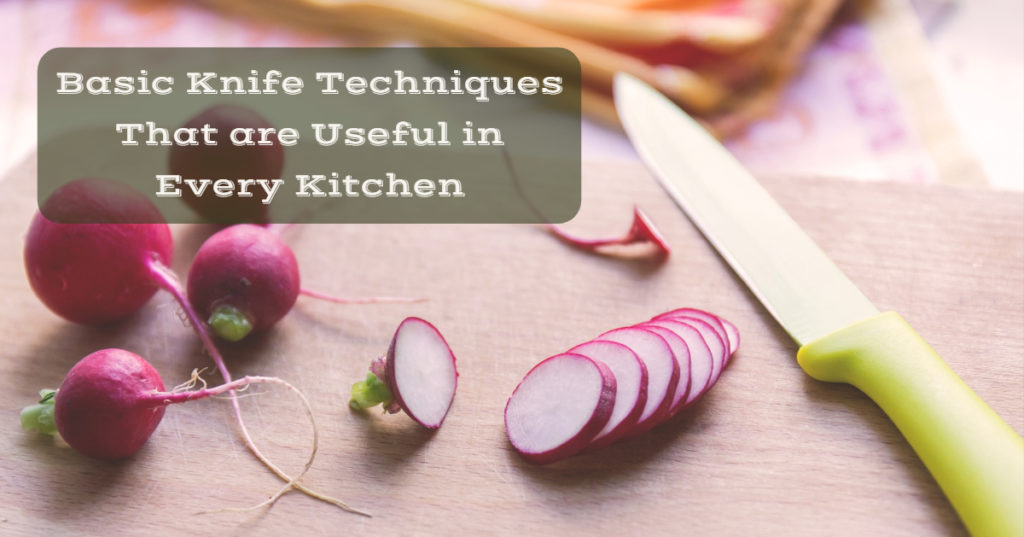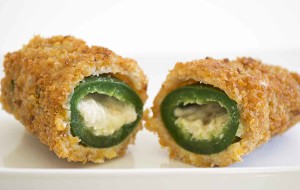
Your kitchen probably hosts a wonderful assortment of useful tools and gadgets that you use to carve, sauté, boil, bake, and finish your plant-based works of art (just because it’s delicious, doesn’t mean it isn’t art). Among those tools, you are sure to have at least one knife, perhaps a set. To go a little further, it may be a VERY nice set of knives. We can get into that topic in another article, dedicated to knife types and price ranges. For this article’s purposes, we’re going to go ahead and assume that you have a knife or more in your kitchen and that you have some idea of how to use it (or wield it, if you’re feeling particularly medieval or ninja-like).
When it comes to the specific knife techniques that you might use while forging a meal in the warm confines of your kitchen, you may already know a few types of cuts, or have perfunctorily performed others without knowing what it’s called. I’m sure you’ve had a request to “cut those into those tiny French-fry things like you did last time!” or something similar in your time. We’re here to provide names and techniques for a few of the most common cuts.
The Slice
This is a blade’s most basic purpose put to perfection. You place your vegetables on a cutting board and slowly cut them from the top to the bottom (or from side to side if you’re feeling fancy). Also, if you’re well practiced, you can manage to slice your vegetables very quickly and efficiently, guiding your knife with the skill and precision of a surgeon. Or you’re like a few of us (me, the writer, included) where you flick your knife with the speed of a jack rabbit that just drank a pot of coffee, brewed with Red Bull instead of water, over your vegetables while making Bruce Lee noises. In such a case you’ll quickly turn your veggies into slices with a devilish grin upon your face, while your hand movement blurs to the naked eye, but you may not get great uniformity or consistency in your cuts (not to mention put anything in arm’s reach in some considerable form of danger – which is why we cannot condone such acts of wanton carelessness… we can just speak of it).
The Dice
The dice, is the slice’s not-so-distant cousin. Take for instance, an onion. When you want small pieces for a recipe, after preparing it if your favourite manner, you usually cut the onion in half so it rests flat on your cutting board. Then, you slice the onion half in uniform distances. The dicing comes into play when you turn those slices 90 degrees and make those slices into tiny little squared. So, you’ve sliced them. You’ve diced them. Now you’re ready to make salsa, salad, or whatever you want to use them for. The moral of the story is, now you know how to dice veggies.
The Batonnet
Do you like French fries? If you’ve ever made French fries, you’ve used the batonnet cut before (or a closely related variant of it). Thinking of a potato, skinned or not, you slice it usually approximately in ¼” slices. Then you take each slice or a small stack of sliced pieces and slice them again at another approximation of ¼”. The end result, you have long strings of ¼” rectangular pieces of potatoes that are ready for frying! For a true batonnet cut, you square your edges off into about 2” pieces so you have very uniform pieces, but then that would leave you with short fries and a lot of little end pieces (depending on the size or length of your potatoes). Obviously, you may cut your fries thicker or thinner, but we’re generalizing here, so please don’t get too technical on us. We just hope that you understand the base of what we’re describing for the cutting techniques.
The Cube
OK, taking our batonnets a little further, and their example, we can then make hashbrowns out of them. This generally equates to making cubes. Any time you take your veggies and make little cubes, you’re… well… making cubes. Surely, this one seems a little self-explanatory, but we couldn’t justify leaving it out. Suffice it to say that, you can make varieties of sizes of cubes, based on the fruits or veggies you’re using, but you’re still using the cube technique.
The Julienne
Do you like matchstick carrots? You know, tiny little carrots sliced into thin little matchstick like rectangles… those tasty little things are made by using the julienne cut. You take the same idea or concept that you apply to batonnets, and miniaturize that. You make slices that are approximately 2-3mm thick (or 1/8” ) and cut those slices again at 2-3mm think again, creating teeny, tiny 2x2mm rectangles of whatever desired length you happen to want. For “matchstick” sized carrots, start the culinary fire by cutting your julienned pieces into approximate 2” lengths.
The Brunoise Dice
Taking julienne technique further, you can dice those little pieces even smaller and make tiny little cubes. Carrots, bell peppers, hot peppers, or zucchini, there are no limits to what you choose to cut so small. These little pieces are great for soups, stews, or pasta sauces.
The Mince
Taking the julienne and brunoise methods further, you can mince your veggies and make the smallest of all cuts. You can be very technical and make small julienne cuts before dicing to try and form tiny cubes. Or, you can simply slice and cut repeatedly to create little pieces that are about 1mm x 1mm x 1mm. Garlic is the most common ingredient that requires mincing, usually for sauces or as a flare of flavour in soups or stews.
The Chiffonade
This is a type of cut that is a fancy way to cut leafy vegetables. Simply roll your leaves, or a small stack of leaves, tightly and slice the leaves perpendicular to the roll. This creates thin strips of your leafy greens that are usually used as a garnish, most commonly basil. This method of cutting greens also gives wraps a wonderful texture, and helps balance the ratios of the ingredients.
The Ninja
This technique is not for the faint of heart. This involves four things: an extremely sharp katana, unfathomable hand-eye coordination, a keen sense of spatial awareness, and a lack of safety concern(s). In this technique, you simply toss your fruits or veggies into the air then, picking up your weapon of grass destruction, silently make innumerable precise cuts to the airborne target before finishing in a deadly and menacing pose before the fruit or veggies fall neatly and perfectly onto the intended surface. As an example, you could try tossing three tomatoes, a bell pepper, an onion, and a jalapeno into the air, then slicing the lot of them into various uniform sizes while mid-air, before they all fall into a salsa bowl, naturally mixing with one another as they find their intended home within the bowl. The keys to this technique are three-fold. First, you cannot make any mess (whereas, in our example, not even a drop of tomato juice finds purchase outside of the bowl). Second, you cannot make a sound (no breathing, so grunting, no kung-fu movie noises, not even the swishing of your blade through the air… complete silence). Third, you cannot do this around people as it is a highly dangerous technique (in reality, you shouldn’t try this at all – but we’re sure that some of you may have done so before reading this article, so we would be remiss to leave it out).






